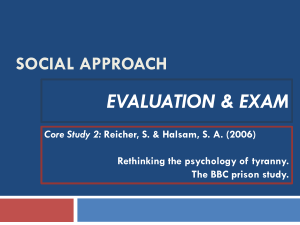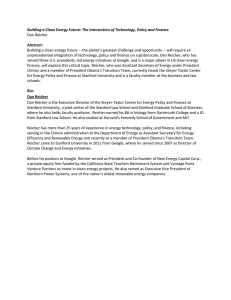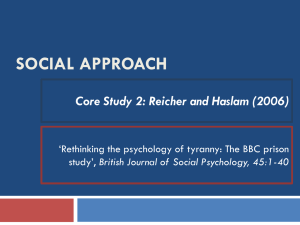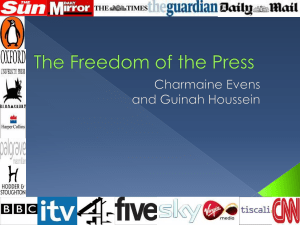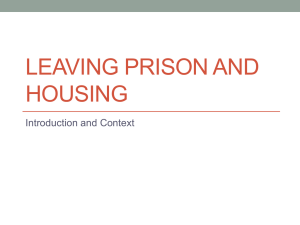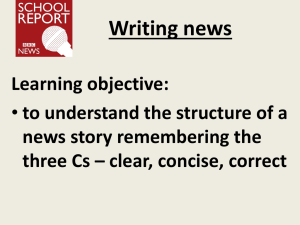Reicher and Haslam Core Study Slides
advertisement
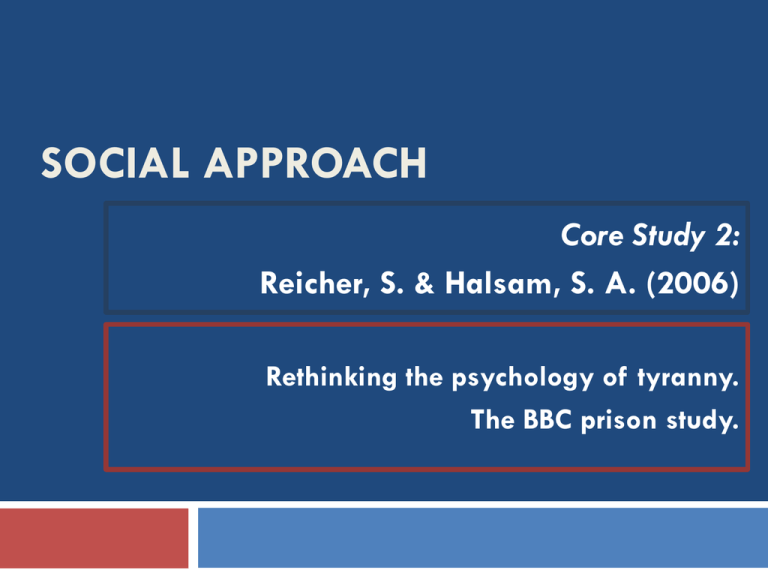
SOCIAL APPROACH Core Study 2: Reicher, S. & Halsam, S. A. (2006) Rethinking the psychology of tyranny. The BBC prison study. Content Page 1. Approach & Behaviour 2. Aim & Hypothesis 3. Method 3a. Method, Design, Variables 3b. Location, Control, Ethical Issues 3c. Sample & Participants 3d. Apparatus 3e. Procedure 4. Data Collection 5. Results/Findings 6. Conclusions 7. Exam Style Questions 1. Approach & Behaviour: R&H What behaviour was being studied? Why was the study performed? 2. Aim & Hypothesis: R&H What were the aims of the study? What method was used? 3a. Method, Design, & Variables What is the research method used by R&H? What are the design features of this study? 3a. Method, Design, & Variables What are the 3 IV’s? 1. 2. 3. What are the DV’s?? 3b. Location, Control, Ethics Where did the study take place? Did R&H put in any control measures? Were any ethical issues raised? If so how did R&H overcome these issues? 3c. Sample & Participants Who was the target population? What sampling technique did R&H use? Describe the sample: Number, Age, Gender, Ethnicity, Occupation etc. How were the participants allocated to the role of guard/prisoner? 3d. Apparatus What apparatus did R&H use? What materials were required? 3e. Procedures Comment on the guards Comment on the prisoners 3e. Procedures Write a step-by-step plan of what happened during the experiment: Start with participant arriving End with participant leaving 4. Data Collection How was data gathered? What quantitative data was recorded? What qualitative data was recorded? 5. Results/Findings List 8 KEY finding from the research - -Include data where possible, both qualitative and quantitative 6. Conclusions Locate research findings to support these conclusions: 1. People do not automatically conform to group or social norms. 2. Groups with power do not always act tyrannically. 3. Failing, powerless groups can lead to tyranny. 4. The breakdown of groups creates conditions under which tyranny can develop. 7. Exam Style Questions - Section A - Section B ESQ: Section A January 2009 Describe how the sample was recruited in Reicher and Haslam’s BBC prison study. (4) June 2009 From Reicher and Haslam’s BBC prison study outline two reasons why the prisoners were given uniforms. (4) January 2010 Reicher and Haslam studied the behaviour of prisoners and guards in a simulated prison. Outline one way the researchers tried to ensure ethical guidelines were upheld. (2) Outline one reason why stress or psychological harm is an ethical concern in this study. (2) ESQ: Section A June 2010 From Reicher and Haslam’s BBC prison study: Describe what is meant by the term tyranny. (2) Describe one of the variables manipulated to create a situation in which tyranny could develop. (2) January 2011 From Reicher and Haslam’s BBC prison study: Describe how permeability was created. (2) Outline how the behaviour of the prisoners changed once the groups had become impermeable. June 2011 The Reicher and Haslam’s BBC prison study can be considered an experimental case study. Outline why the study might be considered an experiments. (2) Outline why this study may be considered a case study. (2) ESQ: Section A January 2012 From Reicher and Haslam’s BBC prison study: Describe the screening process which reduced the initial pool of 332 applicants to 27 participants. (4) June 2012 From Reicher and Haslam’s BBC prison study: Outline one way in which the study had high ecological validity. (2) Outline one way in which the study had low ecological validity. (2) January 2013 From Reicher and Haslam’s BBC prison study: Describe the prison environment created for this study. (4) June 2013 From Reicher and Haslam’s BBC prison study: Outline how the variable of permeability was manipulated. (2) Outline the behaviour of prisoners during the permeability period in this study. (2) June 2014 From Reicher and Haslam’s BBC prison study: Suggest two weaknesses of recording this psychological study for television. (4) ESQ: Section B June 2011: Briefly outline how qualitative data was gathered in your chosen study. (2) Describe two examples of qualitative data recorded in your chosen study. (4) With reference to your chosen study, suggest one strength and one weakness of qualitative data. (6) Describe how your chosen study was conducted. (8) Suggest how your chosen study could be improved. (8) Outline the implications of your changes you have suggested from your chosen study. (8) ESQ: Section B June 2014 Outline why your chosen study was conducted. (2) Describe how the self-report method was used to gather data in your chosen study. (4) Describe one strength and one weakness of gathering data using self-reports. Support your answer with evidence from your chosen study. (6) Outline the findings from your chosen study. (8) Suggest improvements to your chosen study. (8) Evaluate the improvements you have suggested to your chosen study. (8) 7. Exam Tips Issues to be considered Strengths/weaknesses of laboratory experiments Strengths/weaknesses case studies Strengths/weaknesses of observation and self-reports as ways to gather data Strengths/weaknesses of qualitative & quantitative data Strengths/weaknesses of sample Reliability Validity and ecological validity Ethics Exam Tips for study Know the research method, the sample and how it was gathered Know the procedures and how both guards and prisoners were introduced to the study Know the key findings Be able to draw conclusions from the findings. Be able to suggest at least one way in which the study could be improved, possible implications or the suggestion(s) e.g methodology, ethics, reliability, validity, usefulness, practicality etc.
